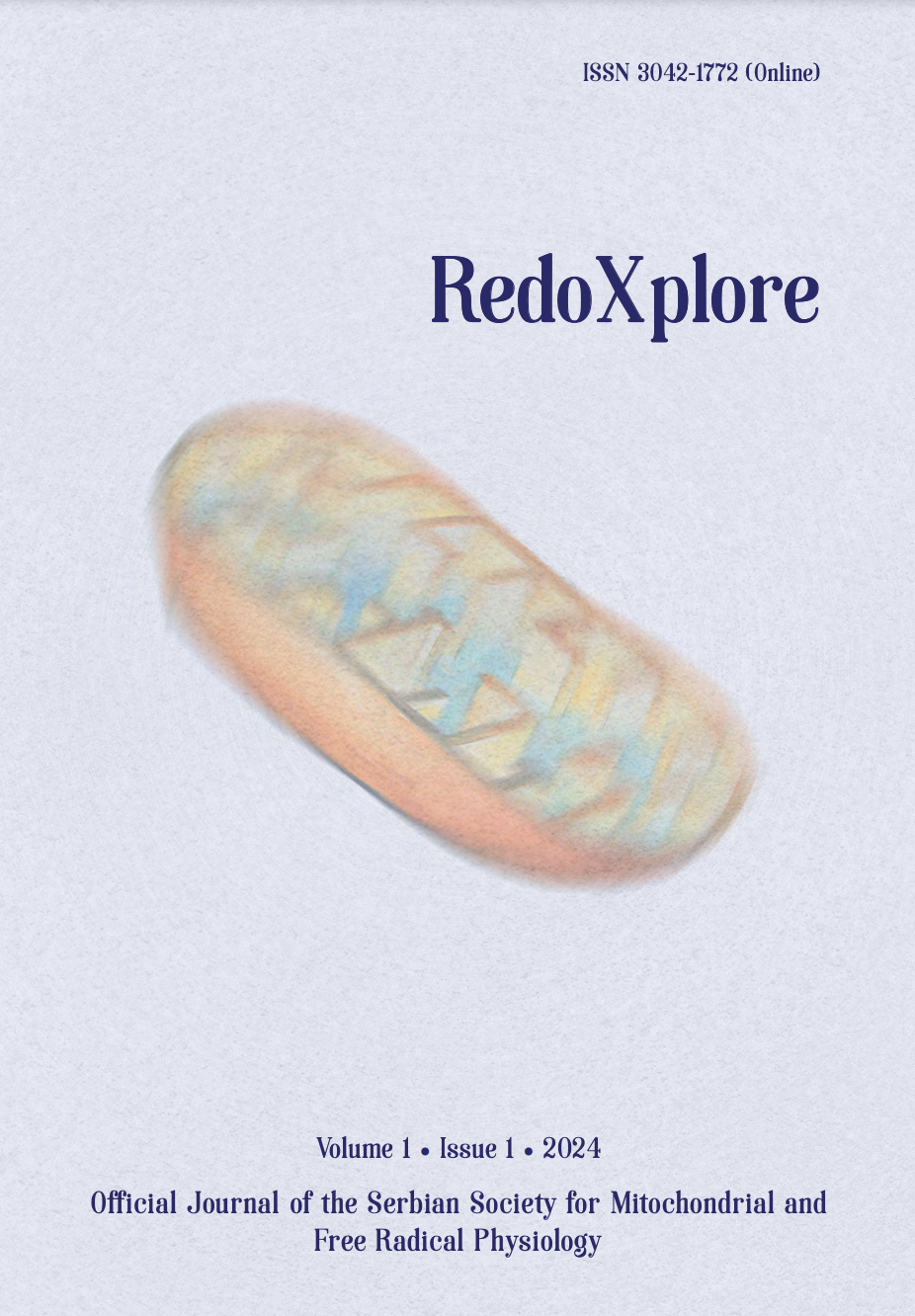
More articles from Volume 1, Issue 1, 2024
REDOX AND METABOLIC REPROGRAMMING OF BREAST CANCER CELLS AND ASSOCIATED ADIPOSE TISSUE - THE CORNERSTONES OF ADAPTIVE TUMOUR BEHAVIOUR
INSULIN MODULATES MITOCHONDRIAL STRUCTURAL AND FUNCTIONAL MOSAICISM IN BROWN ADIPOCYTES
NITRITE MITIGATES OXIDATIVE BURST IN ISCHEMIA/REPERFUSION IN BRAIN SLICES
NITRIC OXIDE, SUPEROXIDE AND PEROXYNITRITE – REDOX REGULATION OF THE CARDIOVASCULAR SYSTEM BY NITRO-OXIDATIVE STRESS AND S-NITROS(YL)ATION
DIETARY NITRATE AS PIVOT ON THE GUT MICROBIOTA-HOST REDOX COMMUNICATION
EFFECTS OF CHRONIC COLD EXPOSURE ON ANTIOXIDANT DEFENSE IN BROWN ADIPOSE TISSUE AND LIVER OF AGED RATS
Institute for Biological Research Sinisa Stankovic – National Institute of Republic of Serbia, University of Belgrade , Belgrade , Serbia
Institute for Biological Research Sinisa Stankovic – National Institute of Republic of Serbia, University of Belgrade , Belgrade , Serbia
Faculty of Biology, University of Belgrade , Belgrade , Serbia
Institute for Biological Research Sinisa Stankovic – National Institute of Republic of Serbia, University of Belgrade , Belgrade , Serbia
Institute for Biological Research Sinisa Stankovic – National Institute of Republic of Serbia, University of Belgrade , Belgrade , Serbia
Editor: Bato Korac
Published: 29.08.2024.
Short oral presentations
Volume 1, Issue 1 (2024)
Abstract
Aging is a natural process characterized by a decline in organic structure-function and an increase in mortality over time. While many exogenous and endogenous factors contribute to aging, the long-term effects of low environmental temperature have been poorly described. To address this, our study compared 24-month-old male Mill Hill hybrid hooded rats raised at a standard temperature of 22±1°C with age-matched rats that were kept in a cold room (4±1°C) from the age of 6 to 24 months. 3- and 6-month-old rats raised at 22±1°C were included as room temperature controls. We examined two metabolically active organs, interscapular brown adipose tissue (iBAT) and liver. It was found that 24-month-old rats chronically exposed to cold exhibit increased food consumption, which may be attributed to a higher metabolic demand. Chronic exposure of aged rats to low environmental temperature led to an increase in iBAT relative mass, total glutathione (GSH) content, and antioxidant defense (AD) enzyme activity: CuZn superoxide dismutase, Mn superoxide dismutase, catalase, glutathione peroxidase, and thioredoxin reductase. Respirometric analysis further demonstrated an increase in mitochondrial uncoupling in iBAT in 24-month-old rats kept at 4±1°C. Conversely, there was no change of the same parameters in the liver, which maintained consistent AD enzyme activity and GSH content across all experimental groups. Our study confirms that iBAT of aged rats remains responsive to stimulation by low environmental temperature, supporting thermogenic processes through uncoupling and a robust increase in the AD system. These results highlight tissue-specific effects of chronic cold exposure on aged rats underlying acclimation-driven physiological changes.
Citation
Copyright

This work is licensed under a Creative Commons Attribution-NonCommercial-ShareAlike 4.0 International License.
Article metrics
The statements, opinions and data contained in the journal are solely those of the individual authors and contributors and not of the publisher and the editor(s). We stay neutral with regard to jurisdictional claims in published maps and institutional affiliations.






